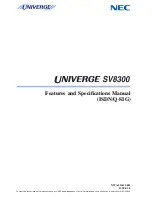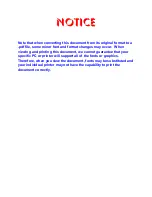
44
Se la posizione di montaggio è verti-
cale ed il relativo albero è rivolto verso
il basso, assicurarsi che il giunto non
possa sfilarsi e cadere. In tutti i casi,
non serrare mai le viti prima di avere
infilato l’albero nella sua sede.
4) Inserire l’albero nella sua sede.
Il montaggio deve avvenire sen-
za interferenza alcuna e questo è
possibile solo con un preciso alli-
neamento riduttore – albero. realiz-
zabile mediante l’ausilio di oppor-
tune attrezzature di sollevamento.
ATTENZIONE!
Il montaggio deve es-
sere effettuato senza applicare forze
assiali, colpi o urti che potrebbero
danneggiare i cuscinetti del riduttore.
5) Rimettere il tappo (Fig.2 punto Z) per
proteggere l’accoppiamento dalla for-
mazione di ossidazioni e arretrare il
giunto nella posizione finale (Fig.3
punto A) prima di iniziare a serrare le
viti.
6) Avvitare progressivamente le viti in
sequenza, secondo uno schema
circolare, con opportuna chiave di-
namometrica, scelta secondo la di-
stanza “X” di progettazione e tarata
alla coppia di serraggio indicata nella
tabella. Effettuare l’ultima passata ta-
rando la chiave ad una coppia più alta
del 3-5% rispetto a quella indicata.
Tarare nuovamente la chiave alla
coppia indicata in tabella ed as-
sicurarsi che nessuna vite possa
essere ulteriormente avvitata, in
caso contrario ripetere la proce-
dura dal punto 5. Il montaggio è
completo e corretto se le superfici
frontali dell’anello interno ed ester-
no si trovano sullo stesso piano.
Non è necessario ricontrollare la cop-
pia di serraggio dopo l’entrata in ser-
vizio del giunto.
7) Proteggere la zona del giunto con op-
portuno carter in lamiera, (Fig.4 punto
P) se si prevede che pietre, sabbia o
altro materiale possano danneggiare
il giunto o le guarnizioni di tenuta del
riduttore.
SL2PLB
Tipo giunto
Coupling type
Kupplungsart
Y
X [mm]
per tipo di chiave
for type of wrench
für Schlüsseltyp
d
T
[Nm]
8516
3208-240X405
144
M20
490
55
115
58
12020
3208-280X460
172
M24
840
65
120
70
18020
3208-300X485
176
M24
840
65
120
70
25025
3208-340X570
206
M27
1250
—
125
85
35031
3208-360X590
210
M27
1250
—
125
85
P
d
Y
X
Fig. 4
If the mounting position is vertical and
the relative shaft is facing downwards,
make sure the joint cannot slip off and
fall. In all cases, never tighten the
screws before fitting the shaft in its seat.
4) Fit the shaft in its seat. Assembly must
occur without any interference and
this is only possible with exact gear
unit/shaft alignment, carried out with
the aid of suitable lifting equipment.
CAUTION!
Assembly must be car-
ried out without applying axial forces,
blows or impacts that could damage
the gear unit bearings.
5) Refit the cap (Fig.2 point Z) to protect
the coupling from oxidation and move
the joint in the final position (Fig.3
point A) before tightening the screws.
6) Tighten the screws gradually in a circu-
lar sequence, using a suitable torque
wrench, chosen according to design
distance “X” and set to the driving
torque given in the table. Carry out the
last tightening, setting the wrench to a
torque of 3-5% higher than that given.
Set the wrench to the torque
specified in the table and make
sure that no screws can be fur-
ther tightened, otherwise re-
peat the procedure from point 5.
Assembly is complete and correct
if the front surfaces of the inner and
outer ring are on the same level.
The driving torque does not have to
be checked after the joint has gone
into operation.
7) Protect the joint area with the special
sheet casing, (Fig.4 point P) if there is
the risk of stones, sand or other mate-
rial that could damage the joint or the
gear unit seals.
dass die Kupplung fest sitzt und nicht
herausfallen kann. Auf keinen Fall die
Schrauben festziehen, bevor die Wel-
le in die eigene Aufnahme eingeführt
ist.
4) Die Welle in ihren Sitz einsetzen.
Der Einbau muss ohne Schwie-
rigkeiten erfolgen, Getriebe – und
Welle müssen daher perfekt aus-
gerichtet sein. Dazu sollten geeig-
nete Hubmittel verwendet werden.
ACHTUNG!
Bei der Montage keine
Axialkräfte oder Schläge und Stöße
anwenden, die die Getriebelager be-
schädigen können.
5) Den Stopfen (Abb.2, Punkt Z) zum
Schutz gegen Oxidation wieder ein-
setzen und die Kupplung vor dem
Festziehen der Schrauben bis in die
endgültige Position zurückschieben
(Abb.3, Punkt A).
6) Die Schrauben nacheinander reihum
mit einem Drehmomentschlüssel
anziehen, der je nach dem Abstand
der Projektvorgaben “X” auszuwäh-
len und dem in der Tabelle angege-
benen Anziehmoment einzustellen
ist. Einen letzten Durchgang aus-
führen und dafür den Schlüssel auf
ein Anziehmoment einstellen, das
3-5% höher als das angegebene ist.
Den Schlüssel wieder auf das in der
Tabelle angeführte Anziehmoment
einstellen und sich vergewissern,
dass es danach nicht möglich ist,
die Schrauben weiter anzuziehen;
anderenfalls ist das Verfahren ab
Punkt 5 zu wiederholen. Der Einbau
ist vorschriftsmäßig ausgeführt,
wenn sich die gegenüberliegenden
Flächen des Innen- und Außenrin-
ges auf derselben Ebene befinden.
Nach der Inbetriebnahme der Kupp-
lung braucht das Anziehmoment nicht
erneut kontrolliert zu werden.
7) Falls Gefahr besteht, dass Steine,
Sand oder anderes Material die Kupp-
lung oder die Getriebedichtungen
beschädigen können, ist der Kupp-
lungsbereich durch eine geeignete
Blechverkleidung zu schützen (Abb.4,
Punkt P).
















































